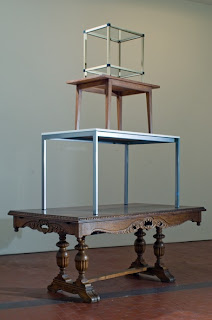We watched everyone's final videos in class. I feel like watching the videos two times, including last week, felt very tedious. If it was hard for me to pay attention it would be even harder for the students. I think only watching them once would be better. Maybe instead of watching the first run through of all the videos we could watch one or two just to get some ideas of how to improve them. Another way to change this might be to split into groups so each student only watches a couple, but I don't knoq how this might work. Also I made the suggestion of having each group pick a theme. Watching the videos then might be better because we wouldnt be watching the exact same letters over and over.
I love love loved the book Eco Books: Inventive Projects From the Recycling Bin by Terry Taylor. It's about making books out of unconventional and found materials. Some examples used were cereal boxes, floppy disks, baggage tags, wood blocks, CD cases, credit cards, maps, cassettes, egg cartons, orange juice containers, and mouse pads. For my book making class I made a book out of found pieces of metal that I epoxied together and wrote on with puffy paint. I will post pictures of that soon. Another book was Magic Books and Paper Toys by Esther K. Smith. It looked pretty interesting, but I need to spend more time with it than just flipping through.
Here is a picture of the kind of book that we're making our graphic novels. It's pretty cool, but I forgot to get the name of it and the author, so I'll do that next class.

We also discussed ways of making 3D paper of binders to work work in. We can do this by rolling up news paper and taping it down then paper macheing it down. The example had some sort of lacquer on it that had an interesting look.













